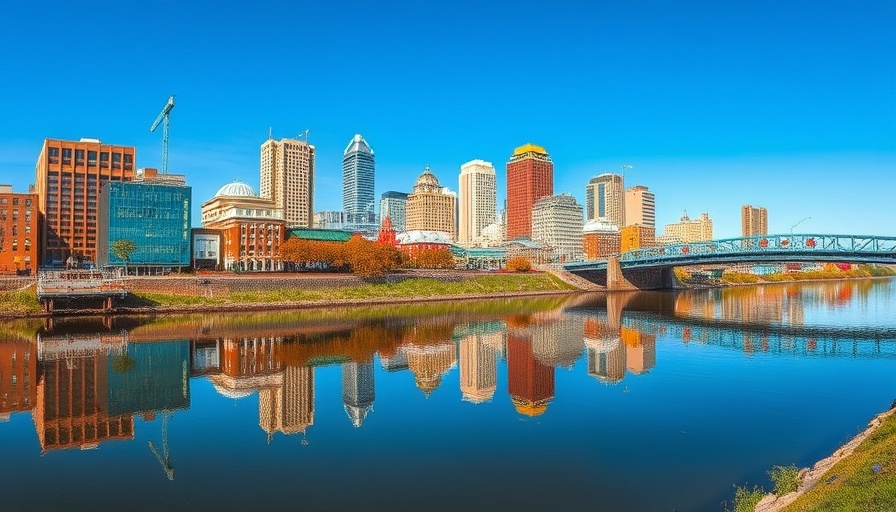
A Murals Journey: From Nashville to Chattanooga
In a curious twist of artwork and geography, a mural on the Hixson office building of Charlotte Mabry Realty in Chattanooga has sparked significant interest. Originally depicting a skyline distinctively reminiscent of Nashville, the mural was transformed to reflect the unique landscape of Chattanooga after feedback from locals.
Artist Tonia Anderson, hailing from Cleveland, Tennessee, was initially surprised by the reactions to her mural, which featured elements of Nashville like its iconic "Batman" building. She noted, "The original painting was very similar to Nashville, but I actually went back out there and have changed it." Her commitment to capturing the essence of Chattanooga is now evident in the updated mural, which showcases recognizable features such as the Walnut Street Bridge and the scenic mountains surrounding the city.
Art's Impact on Community Identity
This mural has become much more than a mere visual spectacle; it represents local pride and identity. Art serves as a reflection of the communities it is part of, and Anderson's changes effectively cement the relationship between community and the stories they tell through art. Mural art often initiates conversations around cultural representation—not just of the artist’s vision but of the people and places therein.
Driving Local Engagement Through Art
The evolution of the mural has prompted discussions among local residents. One employee from the Charlotte Mabry Team mentioned uncertainty about the original inspiration, emphasizing how important community feedback is in shaping art that resonates with the population. This shift mirrors wider trends in public art, where artists and communities collaborate to ensure artworks genuinely represent local narratives.
Transformations in Public Art: The Bigger Picture
With public art increasingly seen as an avenue for community engagement, the alterations to this mural are emblematic of a rising trend: the personalization of public spaces to enhance local identity. Many cities are embracing public art not just as decoration but as a tool for storytelling, contributing to a sense of belonging.
Future of Murals in Urban Spaces: Predictions and Opportunities
As cities continue to expand and evolve, the importance of public art will likely grow—both as a means of beautifying spaces and as a way to communicate histories. Artists might opt to engage more closely with local communities in their creative processes, thereby ensuring that their work celebrates and encapsulates the very essence of the area’s culture.
Engaging Local Talent in Artistic Expression
Moving forward, the trend encourages local talent to partake in public art initiatives. This not only enhances community representation but also fosters relationships among artists, local businesses, and residents. With artists like Tonia Anderson leading the way, future projects can emerge as collaborative endeavors that honor the distinct narratives and histories of each locality.
Conclusion: Embracing Local Narratives through Art
The evolution of the mural at Charlotte Mabry Realty illustrates how art can serve as a powerful medium for self-expression, community engagement, and identity representation. As communities continue to embrace their unique stories, public art will undoubtedly play a central role in narrating those tales. To embrace and support local artists and their work fosters not only appreciation of art but nurtures the unique identity of each community.
 Add Row
Add Row  Add
Add 




Write A Comment